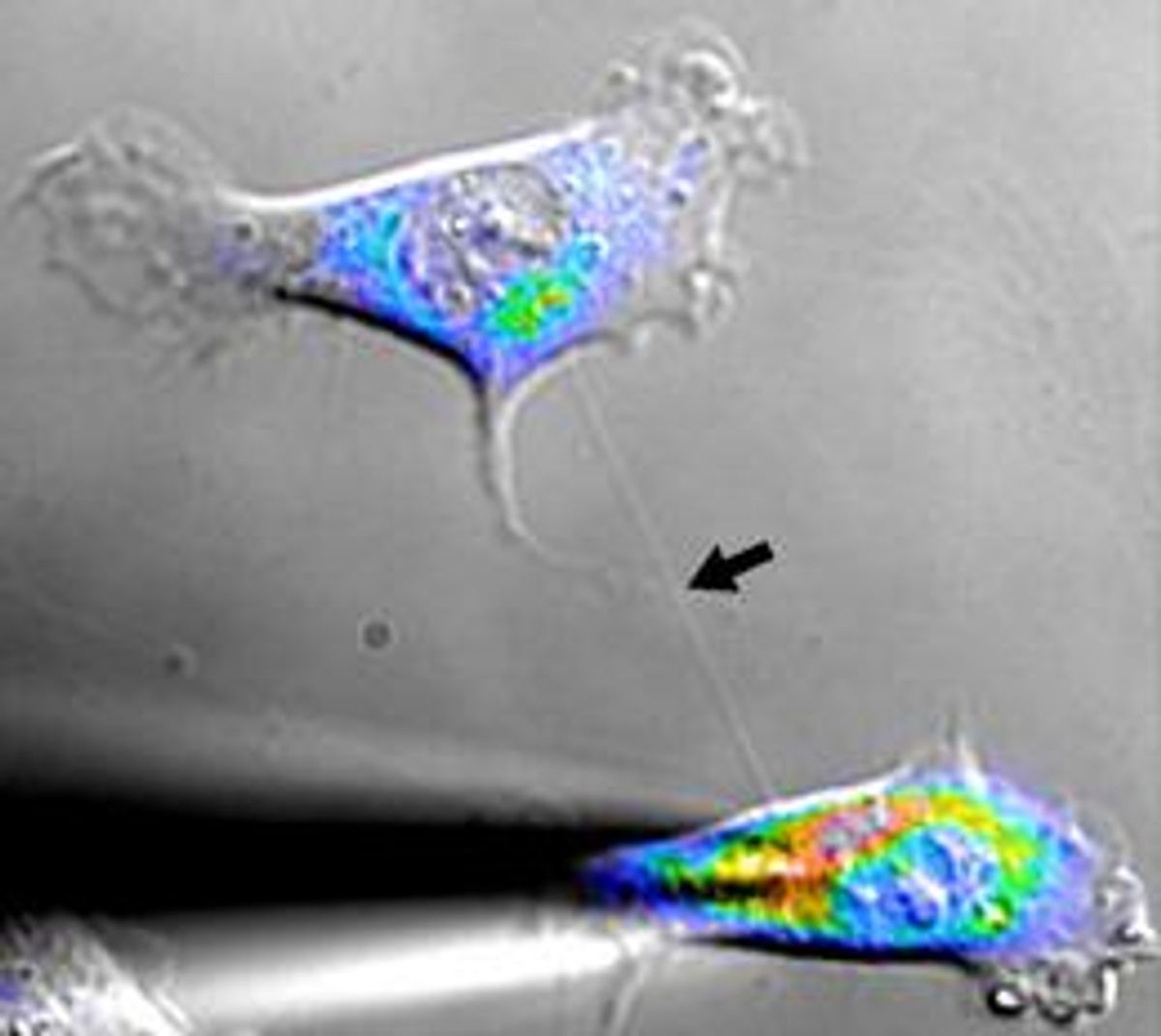A few years back, scientists led by Hans-Hermann Gerdes at the University of Bergen noticed that there were nanoscale tubes connecting cells sometimes over significant distances. This discovery launched a field known somewhat by the term in the biological community as the “nanotube field.”
However, now Gerdes and his team have offered up an explanation that seems to be pleasing the skeptics.
In a recent paper published in Proceedings of the National Academy of Sciences the Norway-based researchers have shown that electrical signals can be passed through the nanotubes and that “gap junctions” are involved in the transmission process.
It is this gap junction bit that seems to be satisfying the skeptics. Gap junctions are proteins that create pores between two adjacent cells and create a direct link between the cells. But the key word in the definition is “adjacent” with these “tunneling nanotubes” or “membrane nanotubes” as they are alternately called, cells can communicate without being adjacent.
"The authors of this paper have identified an exciting way that cells can communicate at a distance. That means you can no longer just think of cells touching each other to coordinate movement," says Michael Levin of Tufts University in Medford, Massachusetts in the Nature article cited above. "Understanding what physiological information these nanotubes pass on will now be a key question for the future."
Among other biological systems that this may help us to better understand is the development of an embryo in which there is massive coordinated cell migration to form the various organs of the body. Another key biological question it helps address--or complicate, as the case may be--is the complexity of the human brain. This research makes the brain drastically more complex than originally thought, according to Gerdes. This could tangentially complicate Ray Kurzweil’s Singularity concepts at least in so far as duplicating the human brain, if current skepticism wasn't damaging enough.Dexter Johnson is a contributing editor at IEEE Spectrum, with a focus on nanotechnology.




